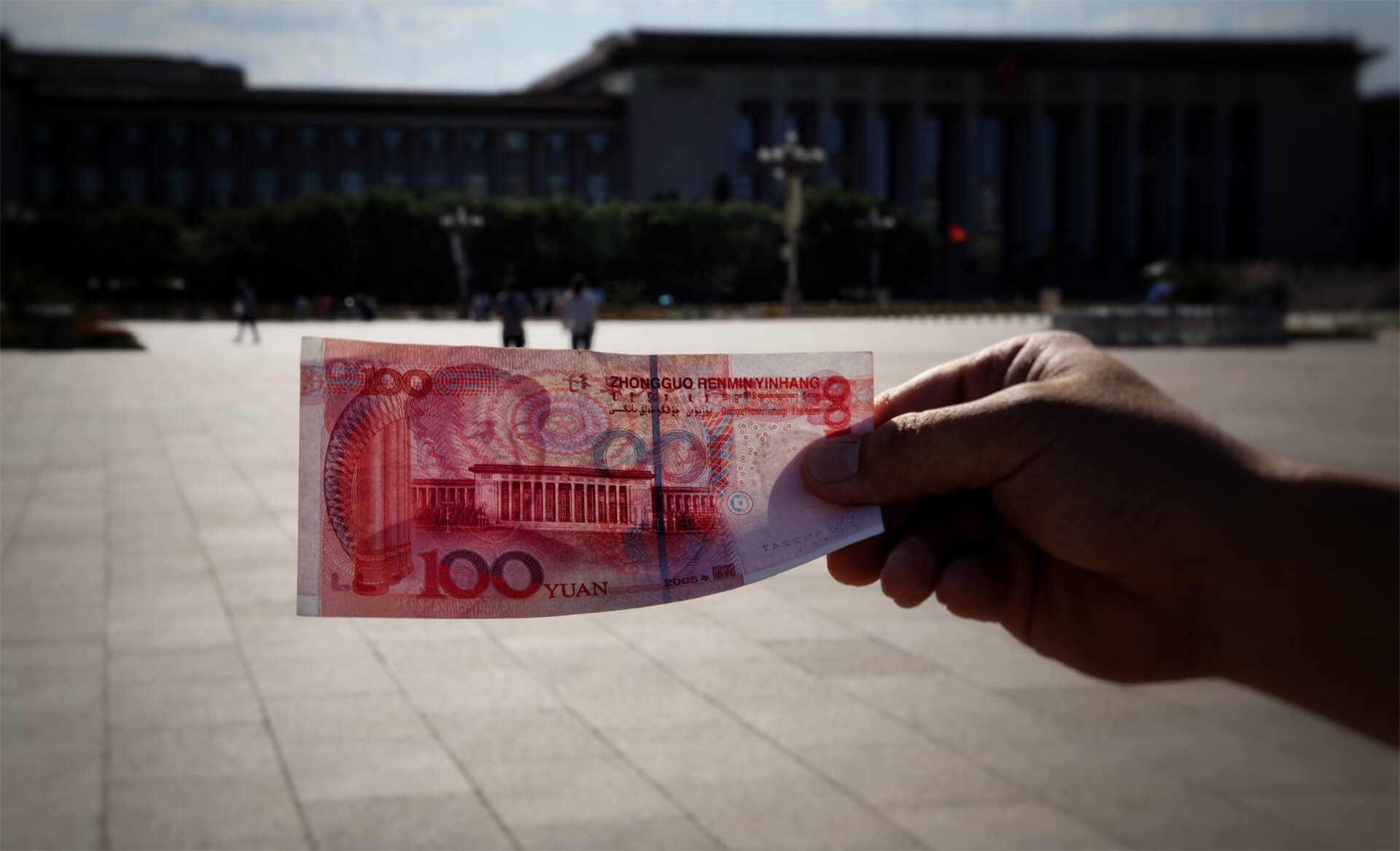You’re receiving this video a week after its initial posting on Patreon. If you’d like to get access to this content as soon as it’s released, along with a number of other exclusive perks, click the link below.
If you ever need to make an online dating profile, be sure to add “long walks on the beach discussing the economic challenges facing China” to the list…I promise you’ll double the dates in no time.
The Chinese have been struggling with economic growth since the beginning of COVID, missing their growth rate target repeatedly and on the verge of a recession. Attempts to bail themselves out continue to fall short, likely because these stimulus measures do not address the core problems (that the population is aging and private consumption is plummeting).
That’s not even an exhaustive list either. The Chinese banking system is severely strained as well. With the government pushing for more lending at low/negative rates, the banking sector is in dire straits. Until major reform hits China, the spiral down will continue…and a larger financial crisis will continue to creep closer and closer.
Here at Zeihan On Geopolitics we select a single charity to sponsor. We have two criteria:
First, we look across the world and use our skill sets to identify where the needs are most acute. Second, we look for an institution with preexisting networks for both materials gathering and aid distribution. That way we know every cent of our donation is not simply going directly to where help is needed most, but our donations serve as a force multiplier for a system already in existence. Then we give what we can.
Today, our chosen charity is a group called Medshare, which provides emergency medical services to communities in need, with a very heavy emphasis on locations facing acute crises. Medshare operates right in the thick of it. Until future notice, every cent we earn from every book we sell in every format through every retailer is going to Medshare’s Ukraine fund.
And then there’s you.
Our newsletters and videologues are free and we will never share your contact information with anyone. All we ask is that if you find one of our releases in any way useful, that you make a donation to Medshare. Over one third of Ukraine’s pre-war population has either been forced from their homes, kidnapped and shipped to Russia, or is trying to survive in occupied lands. This is our way to help who we can. Please, join us.
Transcript
Hey everybody, Peter Zeihan here, coming to you from the South Carolina coast. And today, we’re going to talk about the normal things I talk about when I’m walking on the beach, and that’s Chinese finance. Okayyy? Let’s get that out with a straight face. Okay. For those of you who have been watching the Chinese markets and the economic recovery—or lack thereof—over the last year, you’ll notice it’s been kind of a rough year for them.
By their own statistics, they’re not going to hit their 5% GDP growth target for the year. And if you talk to private folks who have a more realistic understanding of what’s going on, the China that is what’s left of the Chinese bureaucratic system has basically gutted its own statistics to the point where they’re becoming literally useless. We are talking about a borderline recession.
We’re not in China, and this isn’t new. The Chinese economy stumbled in the fourth quarter of 2019 with the onset of Covid. And aside from a couple of blips here and there, it’s kind of been down in the dumps ever since. It wouldn’t surprise me if we had an actual forensic audit done on Chinese books and found that the Chinese economy writ large over that entire period was actually roughly the same size it was before.
The data isn’t out of malfeasance. It’s just the system is outdated. It’s a flag, so you don’t get accurate data at the local level, much less at the national level.
Anyway, in the last couple of weeks, we’ve seen a huge number of measures—not huge stimulus, two different things. They’ve tweaked the mortgage rate a little bit and reduced something called the reserve requirement, which is the percentage of bank deposits that have to be held back at the bank in order to make loans.
All of these things are mildly stimulatory, but they don’t get to the core issue that China now faces: it has so few people under 50 that there just isn’t much of a consumption base to be boosted. And that’s before you consider that the government of Chairman Xi Jinping really doesn’t see private consumption as a meaningful driver of economic growth.
From an ideological point of view, the idea that people would spend on themselves as opposed to spending on the state is something that seems to be a little alien to him based on his rhetoric and speeches. Anyhow, that also kind of ignores the point. We’ve talked a lot about consumption, investment, and trade.
But something we don’t talk about very often are Chinese banks, which are the method by which capital makes its way into the Chinese economy—like in most economies. And that is also completely broken. The Chinese method of encouraging economic activity is to lean on the banks so they lend to everyone for everything, often at zero to negative rates once you adjust for inflation. And when you put a bottomless supply of capital in front of anyone, they will gorge on it, and you will get economic growth.
But whether that growth is stable or sustainable is, of course, questionable. Basically, for those of you in the United States, I’ve just described subprime, Enron, or the savings and loan crisis. It’s all fine until someone actually has to start valuing the loans that are on the books. And when you flood the market with credit, a lot of these loans just don’t work out.
In the U.S., we call these “non-performing loans” (NPLs). If 1.5% by value of a bank’s loans go into that NPL category, then a government regulator will knock on your door and force you to change your policies to bring that number down. Once you get over 2%, that’s when banks start snapping like matchsticks because there isn’t enough margin on those loans to grow out of them.
Well, in China, the margin is sometimes zero or even negative. And because the concept of fiduciary responsibility doesn’t exactly translate well into Mandarin, many of these loans that should have never been made have gone bad. By most internal estimates, China’s total NPL ratio for the entire banking sector is somewhere between 5.5% and 6%, which would basically mean their entire banking sector is, well, out of luck.
This doesn’t mean every bank is there, but for every bank that is below that number, there’s at least one or two above it. As a rule, the least stable banks are the ones that aren’t on the coast. Investment inflows, export activity, and foreign money mean coastal banks tend to run tighter ships.
But as you move inland, especially to poorer, more agricultural areas, it’s all about Chinese state banks, whether they’re the big four national banks or smaller regional ones. So, if you want to talk about the future of Chinese economic growth, it’s not going to be boosted by changing the reserve requirement.
It’s going to be improved by getting the banks into a position where they can actually function a bit more normally. But that can’t happen until they deal with the NPLs. In the U.S., every time we’ve dealt with NPLs, it’s only been because we had a recession linked to the financial sector, like the subprime crisis of 2007–2009 or the savings and loan crisis in the 1980s. China will need to go through something similar.
But you’re talking about something at least an order of magnitude worse. And in relative terms, because the U.S. economy is much stronger than China’s, you’re talking about something even worse than that. So, it’s nice that the Chinese stock market is having a little bit of a pop, but none of the underlying issues have been addressed. Trying to make credit easier when credit is already overextended will simply make the inevitable crash that much harder.








